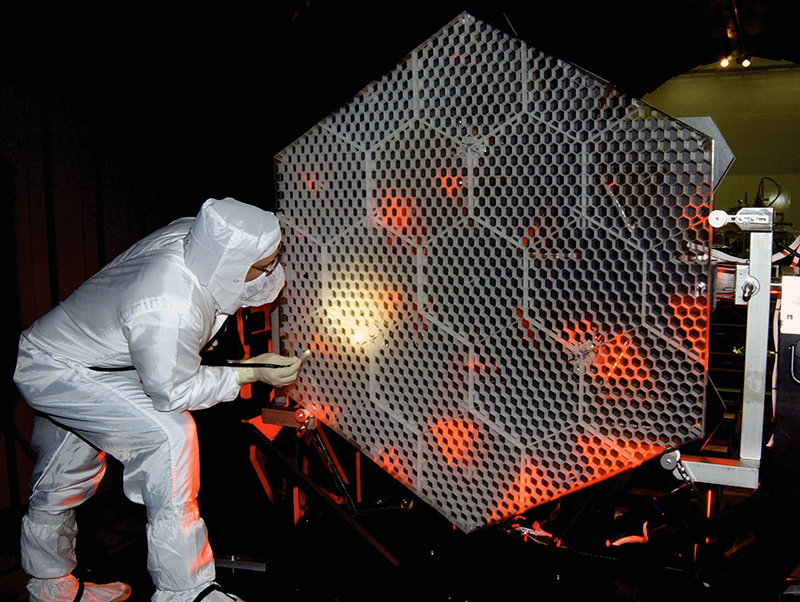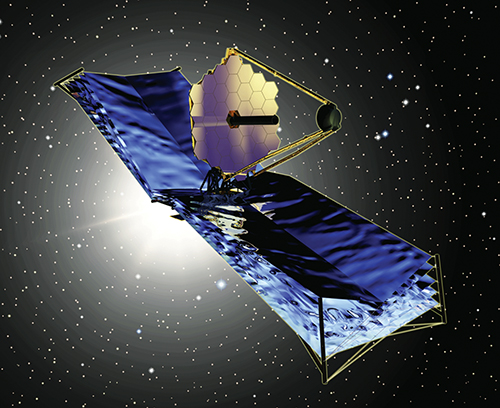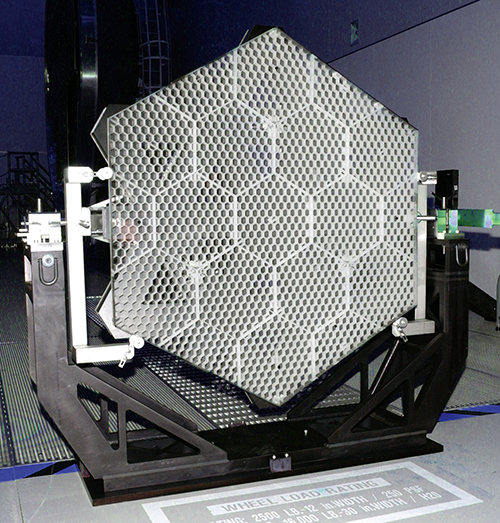
Optics Program Simplifies Analysis and Design
Originating Technology/NASA Contribution
Future spaceborne astronomy missions will require telescopes with increasingly greater power, driving the dimensions of the optics and their housing structures to significantly greater sizes.
The increased size of the structures reduces the dynamic frequencies of the optical system, to the point where disturbance frequencies and structural modes significantly interact. At the same time, the requirements on dynamic stability to achieve the required optical performance are significantly tighter than for anything that has flown before, and, therefore, the sensitivity to dynamic effects is correspondingly high. Finally, the physical size of the optical instruments makes fully integrated system-level testing extremely problematic. Not only are the systems too large to test in any existing environmental chambers, they are susceptible to gravity loading effects and suspension coupling that will significantly change the dynamics. Validation of the large designs must then rest on a combination of analysis and system tests.
Techniques for system tests include using Finite Elements (FE) and FE model updating tools, system identification, and using various other tools for performing optical analyses. These techniques, however, do not provide for analysis of cross-disciplinary results. Therefore, the conventional approach is to develop a requirement budget that assigns error allocations to each of the modeling teams. This approach is extremely limiting in that it does not allow requirements to be freely traded among subsystems. NASA, intent on sending larger, more powerful optics into space, resolved to find a better way to test them.
Partnership
Engineers at Goddard Space Flight Center partnered with software experts at Midé Technology Corporation, of Medford, Massachusetts, through a Small Business Innovation Research (SBIR) contract to design a new analysis system.
The result of the two-phase contract was the Disturbance-Optics-Controls-Structures (DOCS) Toolbox, a software suite for performing integrated modeling for multidisciplinary analysis and design. The Toolbox allows the definition of subsystem/component models, including structural models, control system models, optical sensitivities, and disturbance models. The component models are automatically coupled together to create a mathematic model of a complete physical process, using techniques that maximize the numerical conditioning, while maintaining modeling accuracy.
The code has been validated and applied to the following NASA astronomy projects and facilities: the Terrestrial Planet Finder Structurally Connected Interferometer Testbed (TPF-SCIT), the Terrestrial Planet Finder Coronagraph (TPF-C), the James Webb Space Telescope, and the Solar Dynamics Observatory.
Product Outcome
The purpose of the DOCS Toolbox is to integrate various discipline models into a coupled process math model that can then predict system performance as a function of subsystem design parameters. The Toolbox accepts as input the discipline models from a variety of currently available discipline modeling tools. The Toolbox then connects the discipline models and applies numerical conditioning algorithms to improve the numerical accuracy, while still maintaining model accuracy. It performs the analysis and redesign in a graphical framework that allows the user to define and solve the analysis problem, and it then documents results in a point-and-click environment.
The system can be optimized for performance; design parameters can be traded; parameter uncertainties can be propagated through the math model to develop error bounds on system predictions; and the model can be updated, based on component, subsystem, or system-level data.
The Toolbox allows the definition of process parameters as explicit functions of the coupled model, further enabling the exact definition of sensitivities. It also includes a number of functions that analyze the coupled system model and provide for redesign, including: critical parameter analysis that formally identifies the design variables that have the highest influence on system performance, risk, and cost; optimization of design objective functions subject to constraints on design variables; formal system trading using an isoperformance methodology (a design concept that seeks to create the best-fit concept) that maps out the non-unique set of design parameters that meet requirements; uncertainty analysis for computing errors bound to performance predictions and identifying critical uncertainties; and model updating to renew component math models using measurement data.
The software has myriad benefits, including the ability to automatically couple the discipline models to create a system math model. This provides a complete description of the physical process in terms of all component design variables. The automatic coupling reduces manual effort, eliminates the chance for user error, and automatically checks unit compatibility between components.
The software tool provides a set of “canned” routines for defining parameter dependencies on typical structural parameters, as well as a set of techniques for identifying critical design parameters.
The unique formulation of the parameter-dependent math model enables the designer to formulate many problems as formal optimization analyses, where other analysis techniques would have allowed only the evaluation and comparison of a limited set of design points.
The product is being sold commercially by Nightsky Systems Inc., of Raleigh, North Carolina, a spinoff company that was formed by Midé specifically to market the DOCS Toolbox.
Commercial applications include use by any contractors developing large space-based optical systems, including Lockheed Martin Corporation, The Boeing Company, and Northrup Grumman Corporation, as well as companies providing technical audit services, like General Dynamics Corporation.
DOCS® Toolbox is a registered trademark of Nightsky Systems Inc.

The James Webb Space Telescope is a large, infrared-optimized telescope, scheduled for launch in 2013. It will find the first galaxies that formed in the early universe, connecting the Big Bang theory to our own Milky Way galaxy.

One of many segments of the mirror assembly being tested for the James Webb Space Telescope project at the X-Ray Calibration Facility at Marshall Space Flight Center. Marshall is supporting Goddard Space Flight Center in developing the telescope by taking numerous measurements to predict its future performance.

A Marshall Space Flight Center employee is inspecting one of the mirror assemblies for flaws.













